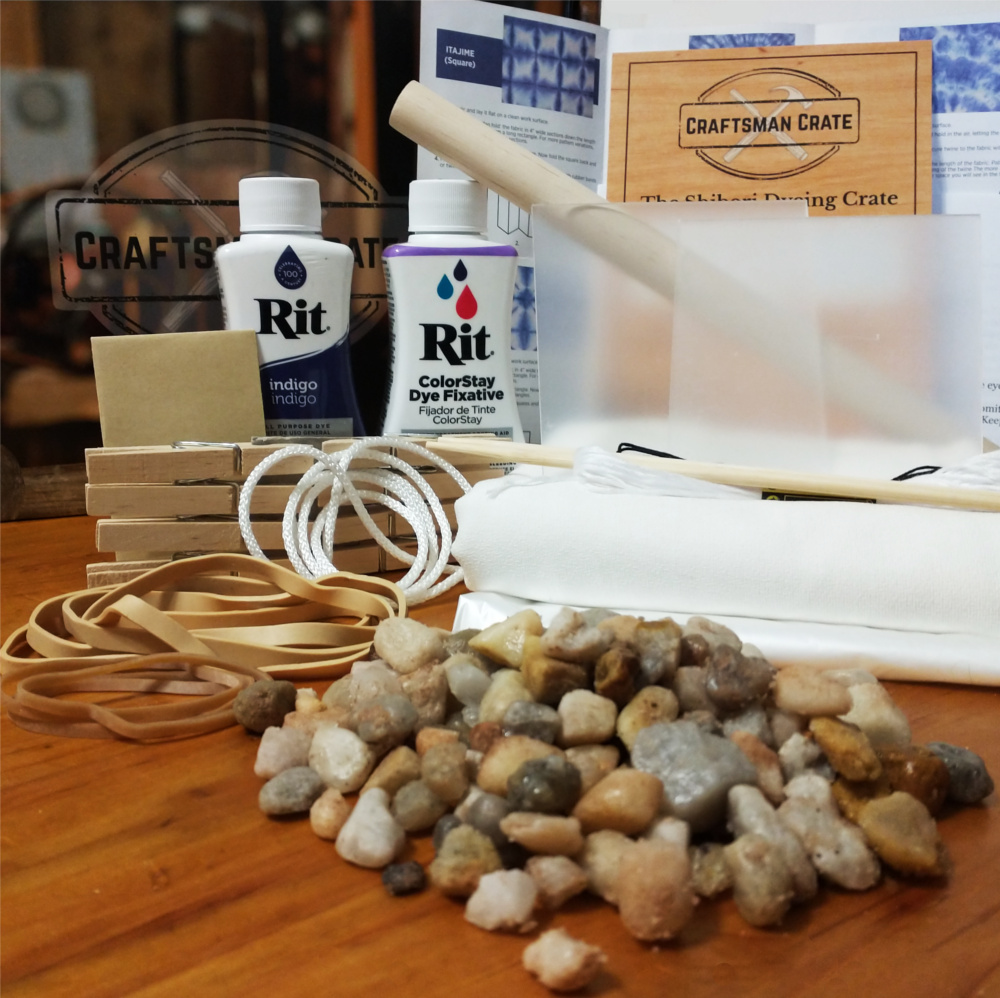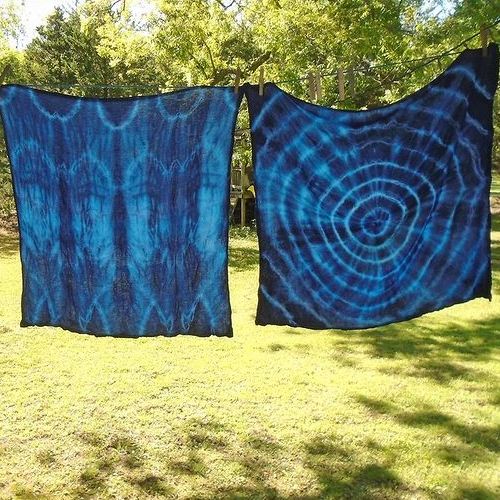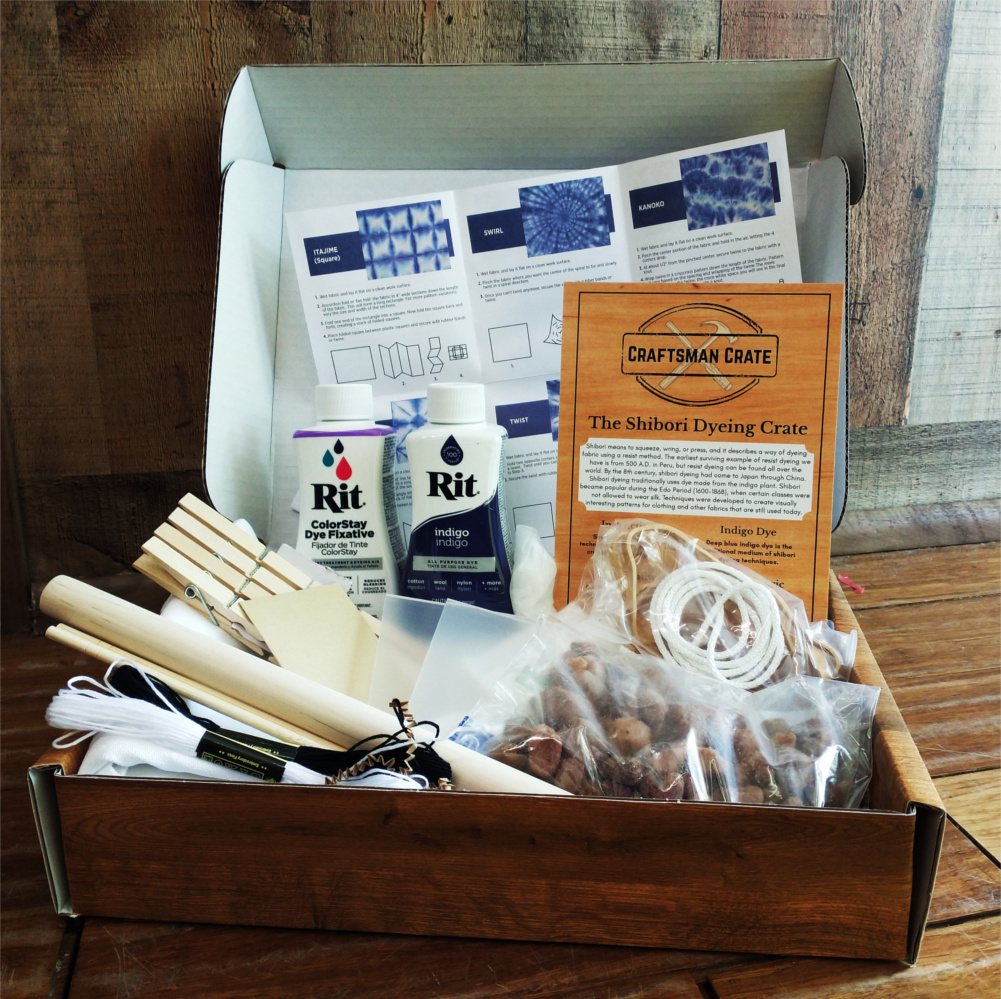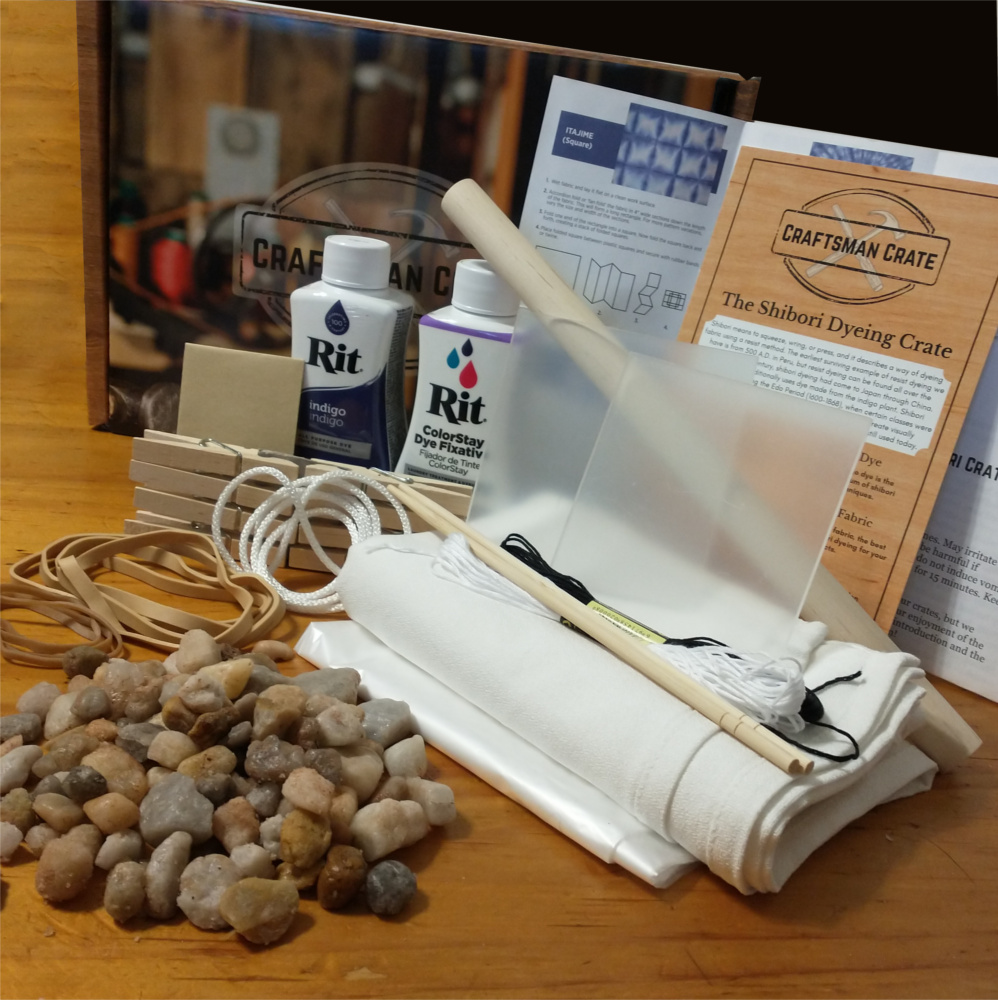Description
Shibori may make you think of the tie-dye of the 1960’s, but actually it has a long and storied history. Like origami, it dates back hundreds of years. When we started looking into it, there was so much more than we imagined. There are some things about that time that you’ll want to know. If you have our origami kit, you have heard some of this before, but some will be new. Let’s talk about the Edo period in Japan from 1603 to 1868.
Emperors ruled Japan during that time, but they had little real power. The power was in the hands of the Shoguns and under them, the Samurai. Japan was highly feudal with a rigid class structure. It was unusually urbanized, probably because regional rulers were required to spend every other year in Edo, the capital, and literate, thanks to the neo-Confucian schools. Confucianism is an Asian religious philosophy that highly values education. Samurai would never consider working on a farm like a peasant or in a business like a merchant. It was, however, considered proper for them to give their time to the arts and literature.
Confucianism also values thrift as well as strict class structure. As the wealth of the merchant class began to grow, the shoguns passed sumptuary laws that prevented people from pursuing luxury considered beyond their station in life. They wanted to preserve the differences between the classes. Merchants and artisans were prevented from wearing gold leaf or fabric with gold threads. Farmers and servants were not allowed to wear silk and were restricted to cotton or hemp.
The Closed Country Edict of 1630 prohibited Japanese from traveling outside the borders of Japan and forbade anyone who did leave from ever being allowed to return. Trade with other countries did continue, but foreigners were allowed very little contact with citizens of Japan. Foreign culture and influence were resisted, and many Japanese Christians were martyred. However, much of what we associate with Japanese culture came about during this time of isolation, as well: kabuki theater, tea houses, sushi and tofu restaurants, sumo-wrestling, and in-country tourism and pilgrimages. Much of the art we think of as Japanese was created during the Edo period.
So, when farmers and the lower classes wanted to wear more attractive clothing, they turned to the traditional, and therefore approved, technique of shibori dyeing. Indigo, used to produce a deep blue dye, was widely grown in Asia at the time and became the primary color of shibori.
Shibori uses a resist dyeing technique, compressing the fabric so that some parts resist or do not accept the dye, creating distinctive patterns.
The Shibori Crate Contains:
Rit Indigo Dye – This easy to use, nontoxic dye gives you the traditional deep blue color of shibori.
ColorStay Dye Fixative – This fixative reduces bleeding and fading. It also enhances the color of your project.
Pan Liners – Use these to line your pan or tub to make clean up easy.
Chopsticks – Mix the dye and fixative and manipulate the fabric in the dye with these, just as the Japanese did.
Cotton Flour Sacking – We include the first couple of projects for you to try out the techniques on.
Gloves – Wear gloves so you don’t end up with blue hands!
Acrylic Square – Bind the fabric to this for square or triangular patterns.
Clothespins – Use these as clamps on the fabric to add interest.
Cording – Can be used to bind the fabric and add stripes.
Rubberbands – Another way to bind the fabric.
River Rocks – Natural, found items are a traditional tool in shibori. Rinse these found objects off before use.
Wooden Rod – Wrap fabric around this for another technique.
Embroidery Floss and Needle – Use this to stitch patterns on the fabric or to bind the fabric.
Photo of Shibori-dyed fabric hanging to dry outside is courtesy of Homeschool on the Range blog and store. Be sure to check out the work of her son, one of our subscribers, at Cullowhee Creates. He’s been inspired by our crates in some of his work.








Reviews
There are no reviews yet.